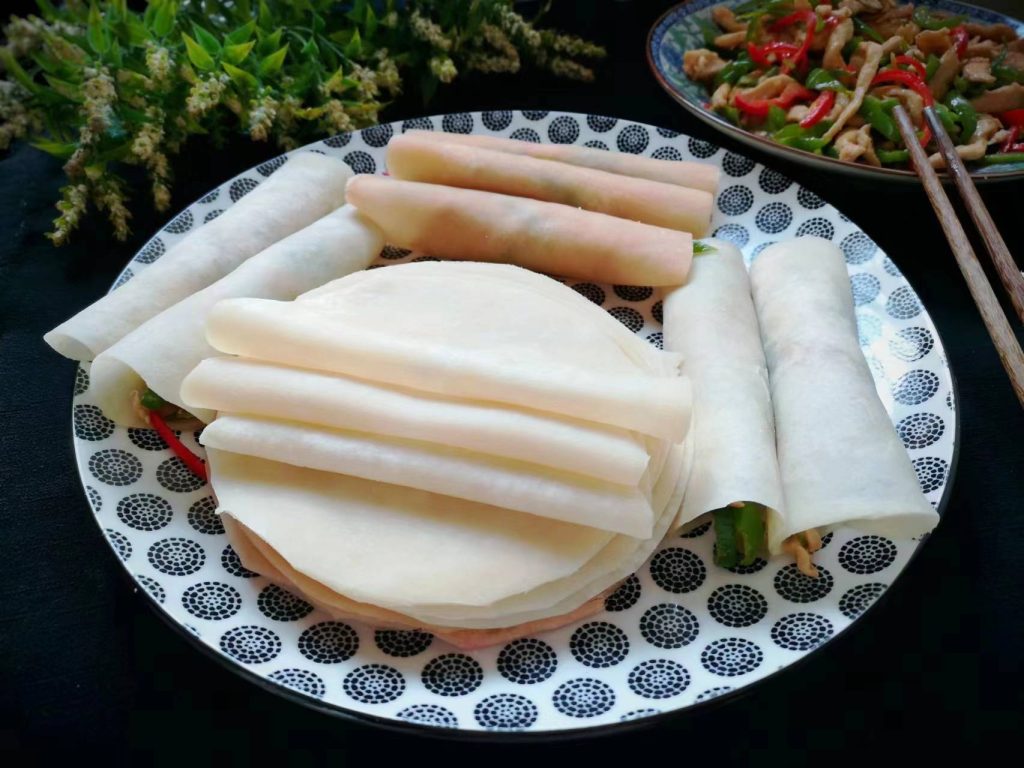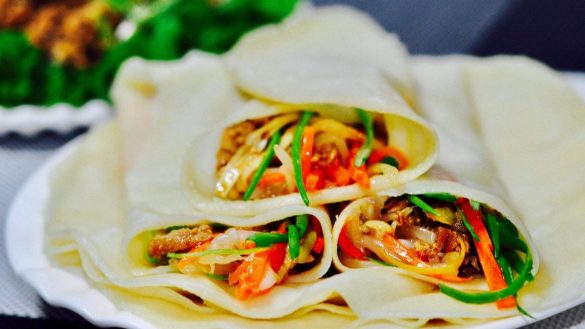In the realm of culinary arts, the spring pancake stands as a testament to the elegance of simplicity. Thin yet tender, these pancakes are a universally cherished delight, transcending age and time, never losing their softness, even as leftovers. My favored rendition involves a spread of sweet bean sauce, a mosaic of potato shreds, mung bean sprouts, julienned ham, egg crepe strips, green onions, and cucumber sticks. But why not let your imagination take the lead? Perhaps add some shredded meat or roll in some roast duck for a twist.
Before You Begin: A Gentle Reminder
Please, peruse the recipe carefully before embarking on your culinary journey. Here are a few pointers to ensure your success:
- Whether you use cold, lukewarm, or hot water to mix the dough, each can yield perfection.
- High-gluten, low-gluten, or all-purpose flour are all viable options, each lending a unique texture.
- Remember, this is not a leavened pancake; no yeast is required.
- Feel free to adjust the water content to achieve the desired dough consistency.
- To bask in the joy of a flawless creation, refrain from rolling the dough too thin, which may lead to tearing. Flip and roll the dough repeatedly to ensure even thickness and size.
Ingredients:
- Flour (all-purpose or high-gluten): 200g
- Cool or hot water: 100g
- Cooking oil: As needed

The Method to Achieve Paper-Thin Spring Pancakes:
- Mix flour with water until it forms a clumpy texture, then knead it into a smooth dough. Cover with plastic wrap and let it rest for about 20 minutes. Adjust the water as needed depending on the flour’s absorption rate.
- Divide the rested dough into even portions—I usually make 17 pieces weighing 17g each.
- Roll out each piece like you would a dumpling wrapper, but not too thin, striving for uniform size.
- Stack the rolled-out dough pieces, applying a thin layer of cooked oil between each. Cooked oil, which is simply oil heated and cooled, is recommended for its milder color and taste. However, raw oil can also be used without issue.
- Once stacked, gently press the layers together to make rolling easier and to even out the size.
- Roll the stack into one large pancake, flipping and turning to keep the thickness uniform. Aim for a size similar to an 8-inch cake pan, and don’t roll too thin to prevent tearing.
- Prepare your steamer with a cloth or steamer paper for easy removal. Steam over cold water for about 15 minutes after the water begins to boil.
- Carefully peel the pancakes apart while they’re still warm. If they stick, peel them in pairs.
- Each pancake should come apart completely, soft and thin enough to see the pattern of the plate underneath.
- My preferred way to enjoy them: spread with sweet bean sauce, topped with shredded potato, bean sprouts, ham, egg crepe, green onions, and cucumber. Then simply roll them up and savor the burst of flavors.

